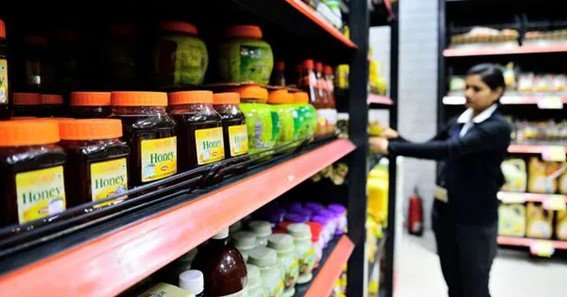The fast-moving consumer goods (FMCG) sector in India is a competitive space, with Patanjali Foods and Marico Limited standing out as key players. Both companies have carved out unique niches with distinct product portfolios and strategies. This article explores Patanjali Foods vs Marico, comparing their market share, financial performance, and growth strategies to determine which company leads the FMCG race.
Patanjali Foods vs Marico: Market Overview
Patanjali Foods Market Share
Patanjali Foods, formerly known as Ruchi Soya, has witnessed significant growth in the FMCG sector. With a strong presence in edible oils, packaged foods, and Ayurvedic products, the company has positioned itself as a leader in natural and health-focused offerings.
Marico Market Positioning
Marico is renowned for its iconic brands like Parachute, Saffola, and Livon. The company’s market positioning emphasizes premium products in the personal care and health food segments, catering to a diverse audience in India and abroad.
Comparing Product Portfolios
Marico Product Portfolio
Marico’s strength lies in its focused yet diverse portfolio. Key categories include:
- Cooking Oils: Saffola, a trusted brand in the health-conscious cooking oil segment.
- Hair Care: Parachute, Livon, and Hair & Care dominate the hair oil and styling markets.
- Health Foods: The Saffola range extends to oats, soups, and other health-oriented products.
Patanjali Foods Product Portfolio
Patanjali Foods offers a wider range of products driven by its Ayurvedic branding. Categories include:
- Edible Oils: Nutrela is a leading name in this segment.
- Packaged Foods: Products like atta, biscuits, and ghee emphasize health and natural ingredients.
- Personal Care: Ayurvedic soaps, shampoos, and health supplements bolster its portfolio.
Financial Performance: Patanjali Foods vs Marico
Patanjali Foods Financial Performance
Patanjali Foods reported a threefold increase in quarterly profit to ₹2.63 billion in Q1 FY24, driven by stable edible oil prices and growing demand for packaged foods. Its aggressive revenue growth reflects effective expansion into new markets.
Marico Financial Performance
Marico achieved an 8.7% rise in Q1 FY24 profit to ₹4.64 billion, bolstered by consistent demand for its cooking oils and hair care products. The company also reported a 6.7% increase in operational revenue during the same period.
Competitive Analysis and Growth Strategies
Patanjali Foods Competitive Analysis
Patanjali Foods leverages its Ayurvedic heritage and competitive pricing to capture a price-sensitive market. Its wide distribution network and focus on health-centric products provide a significant competitive edge.
Marico Growth Strategy
Marico’s growth strategy revolves around innovation in health and wellness products, international expansion, and premiumization of its offerings. Its consistent brand-building efforts have fostered strong consumer loyalty.
Patanjali Foods vs Marico Profitability
While Marico maintains stable profitability, Patanjali Foods has demonstrated faster growth in recent quarters, driven by diversification and market penetration.
In conclusion, when comparing Patanjali Foods vs Marico, both brands offer strong product portfolios, but their market strategies and consumer appeal differ significantly.
FAQ
1. Which company has a larger market share, Patanjali Foods or Marico?
Marico has a significant presence in personal care and health foods, while Patanjali Foods leads in edible oils and Ayurvedic products. Market share dominance depends on the specific product category.
2. How do their product portfolios differ?
Marico focuses on health and personal care products like Saffola and Parachute, while Patanjali Foods offers a broader range of Ayurvedic and natural products.
3. Which company is more profitable?
Marico has shown stable profitability, while Patanjali Foods is experiencing rapid growth in revenue and profits, particularly in recent quarters.
4. What drives Patanjali Foods’ competitive edge?
Patanjali Foods benefits from its Ayurvedic branding, wide distribution network, and cost-effective pricing strategy.
5. How does Marico plan to sustain growth?
Marico’s growth strategy includes premiumizing its products, expanding internationally, and innovating within the health and wellness space.
Both Patanjali Foods and Marico have unique strengths, making them formidable competitors in the FMCG space. While Marico boasts a stable and focused approach, Patanjali Foods continues to innovate and expand aggressively. Understanding Patanjali Foods vs Marico helps investors and consumers appreciate the dynamics of India’s FMCG industry.
Disclaimer: This article is for informational purposes only and should not be taken as financial advice. Always consult a financial advisor for investment decisions.










